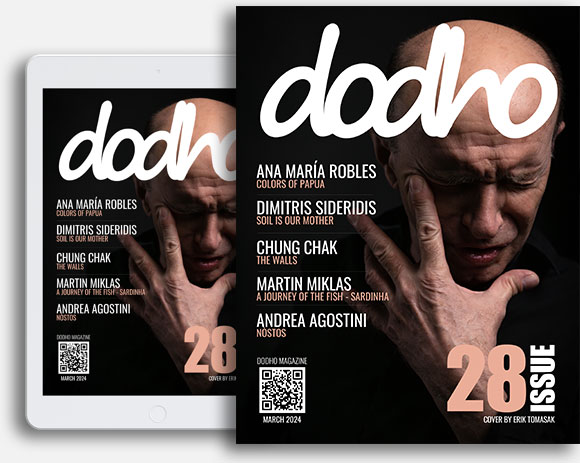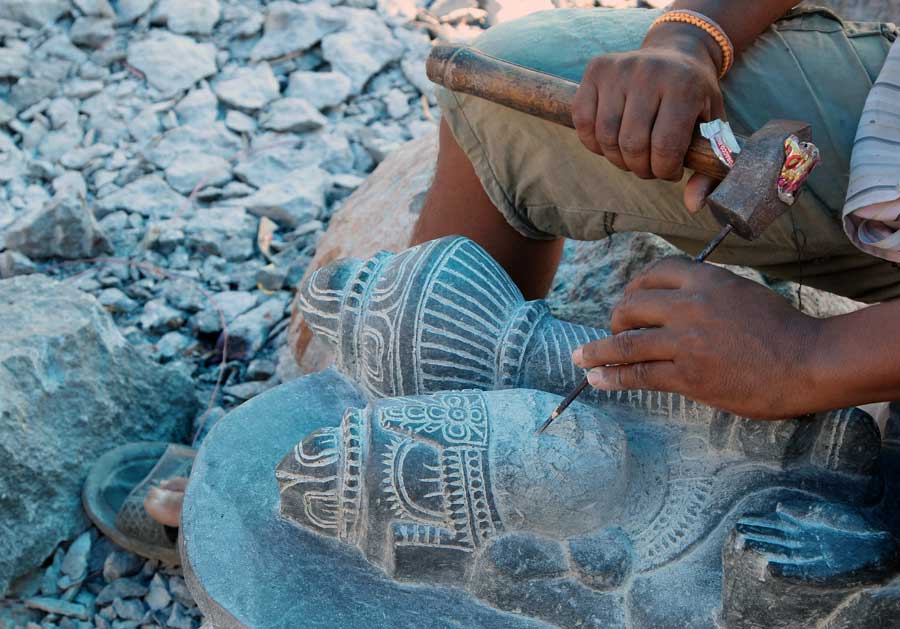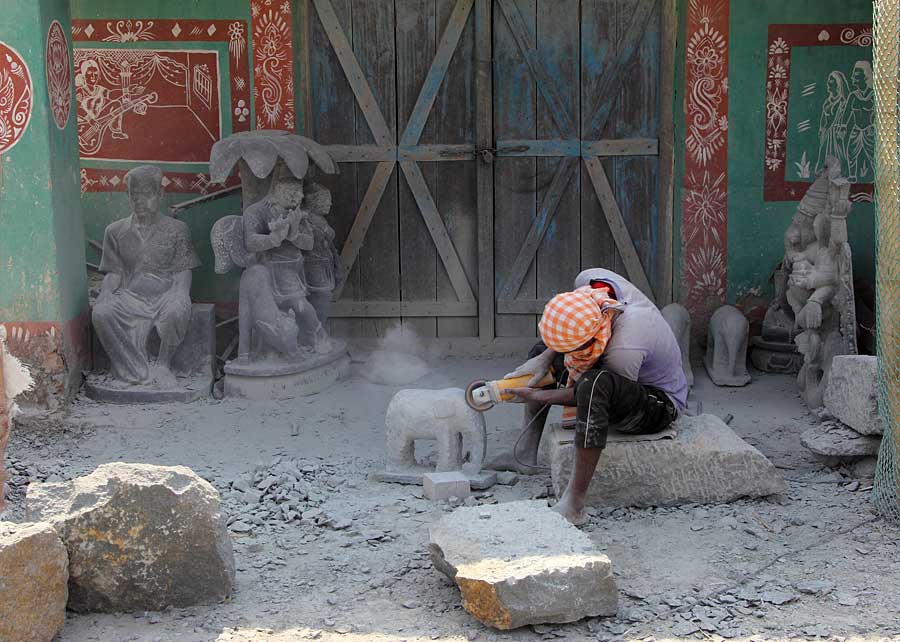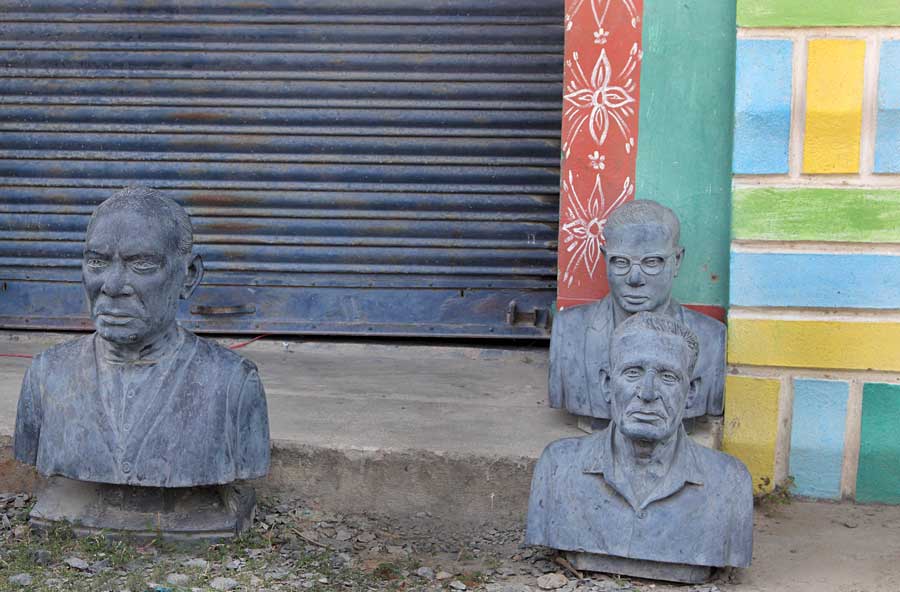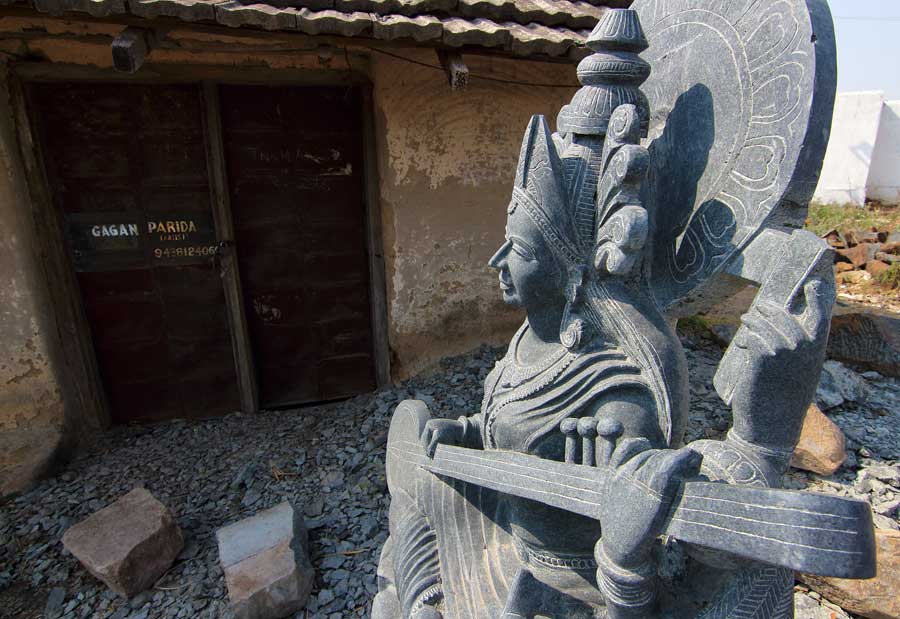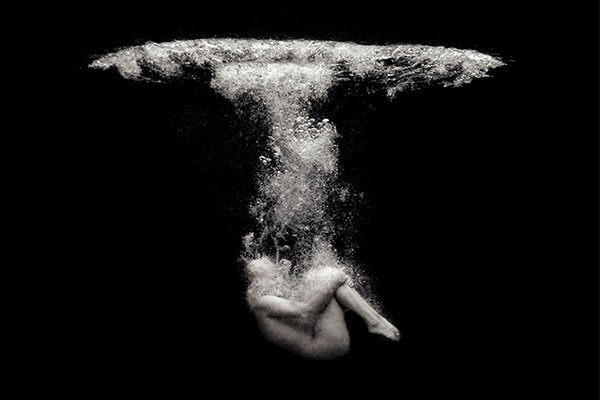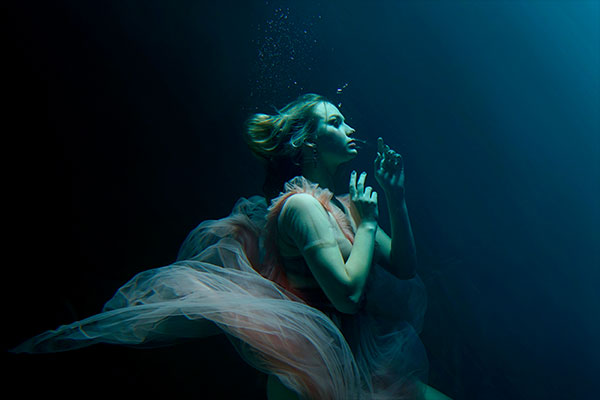Stone carvings of Orissa dates back to the 9th century and was contemporary to the Kalinga school of medieval Indian architecture.
The state of Orissa in India is known for its rich cultural and artistic inheritance. Stone carving is an important form of art which is practised by many craftsmen for their livelihood. The huge repertoire of stone carving of Orissa is best revealed in the architecture and rock-cut sculptures of Lingraja, Jagannath, Mukteshwara and other temples.
Other noteworthy monuments include the temple chariot of the Sun God at Konark, stupas of Ratnagiri and Udaygiri etc. Contemporary artisans have made many a decorative and utility articles like ashtrays, paperweights, candle stands and book rests including utensils and kitchen wares out of stones.
India has a vast resource of different types of stones and the artisans of Orissa are equally at home while working with any of them. Only a few simple tools like hammers and chisels of various shapes and sizes better known as ‘Muna’, ‘Patili’, ‘Martual’, ‘Thuk-Thuki’ and ‘Nihana’ in local parlance are enough to carve the ultra soft white soapstone, or Khadipathara, harder greenish chlorite or Kochilapathara and pinkish Khandolite or Sahanapathara and the hardest of all black granite or Mugunipathara. Stone carving in Orissa is a traditional craft and has been practiced for centuries and had reached dizzy heights of excellence due to disciplined efforts of generations.
A drive of 155 Kms from home (193 Kms from Balasore), we reach a small village named ‘Keshana’ in the mayurbhanj district of the adjascent state of Orissa. On the way just before 3 kms to Keshana, we cross over the famous Kichakeswari temple in Khiching ( ancient capital of the Bhanja rulers) which according to Hindu Mythology was a place of worship of the ‘King Kichak’, the ruler of Mayurbhanj in the era of Mahabharata. The temple was constructed during the year 920/925. Goddess Kichakeshwari or Chamunda was the kuladevi of Bhanj dynasty and also the State deity of the Princely state of Mayurbhanj.
Keshana is a small village famous for Granite carving works but is still unknown to many. No one knows when the stone workers came here and how this work started in this region but there is a belief that the craftsmen came here during the renovation of the broken Kichakeswari temple in the past during the period of the Garjat rulers ( Mughal feudatories ).
The availability of granites in the area is probably one of the reasons for the people to engage in this profession. The abundance of stones also help these artisans to stick to this place for the fact that the stones are heavy and transportation of it is expensive. People of different ages are engaged in the stone carving work who make a range of items from these black stones. Home utensils and Kitchen wares, show pieces, Idols/ effigies of different Gods, and Goddesses are usually made, but idols of known or popular figures are also made on demand.
The Stone carvings are usually Monolith and the price ranges from 100 Rupees to 15 Lac Rupees. The skill and creativity of the artisans are very dominantly expressed in the carvings. Many a times these skilled craftsmen are engaged by contractors on a daily wage basis for these idol carvings which are stocked, then sold and transferred to the different parts of the country and exported abroad through the export houses.
About Abhishek Nandy
Abhishek Nandy is a self taught amateur photographer from Jamshedpur, Jharkhand in India. He believes ‘there is a picture everywhere…its only about perception and observation.”
Abhishek is basically into art photography with inclinations towards human interest and travel. He has been conferred with the honour EFIAP from the International federation of photographic art, FIAP, Belgium and also a fellow of the federation of Indian photography.


